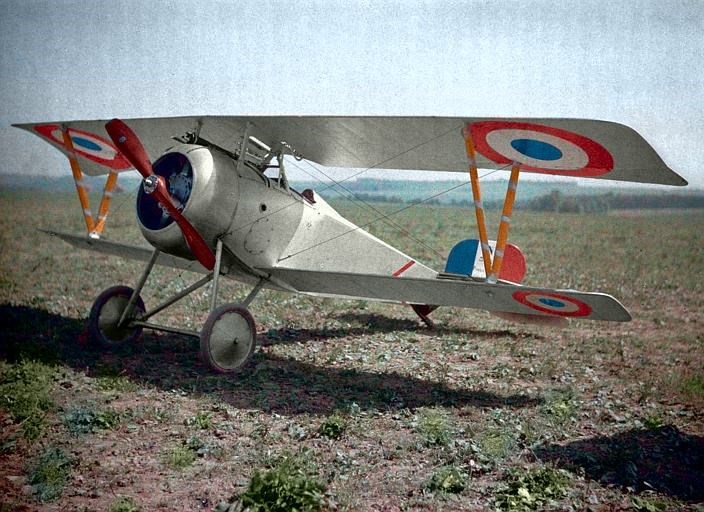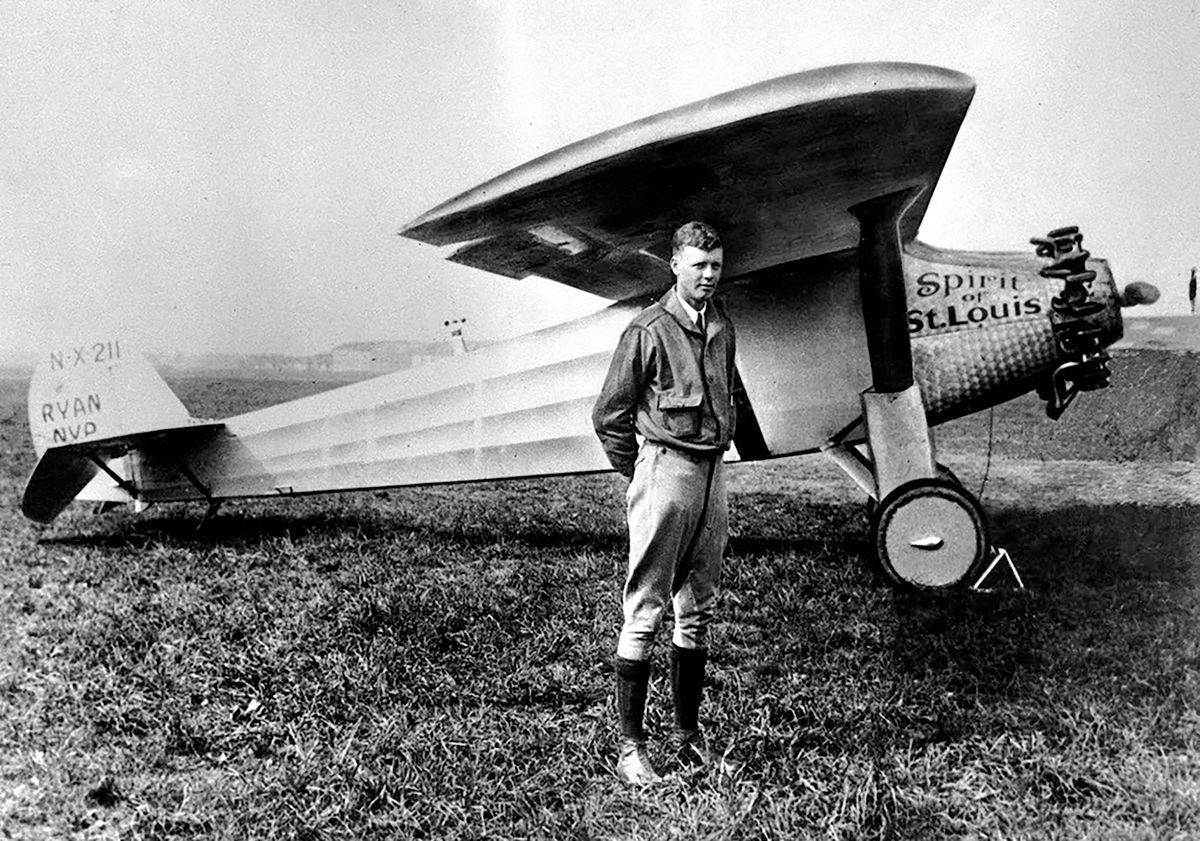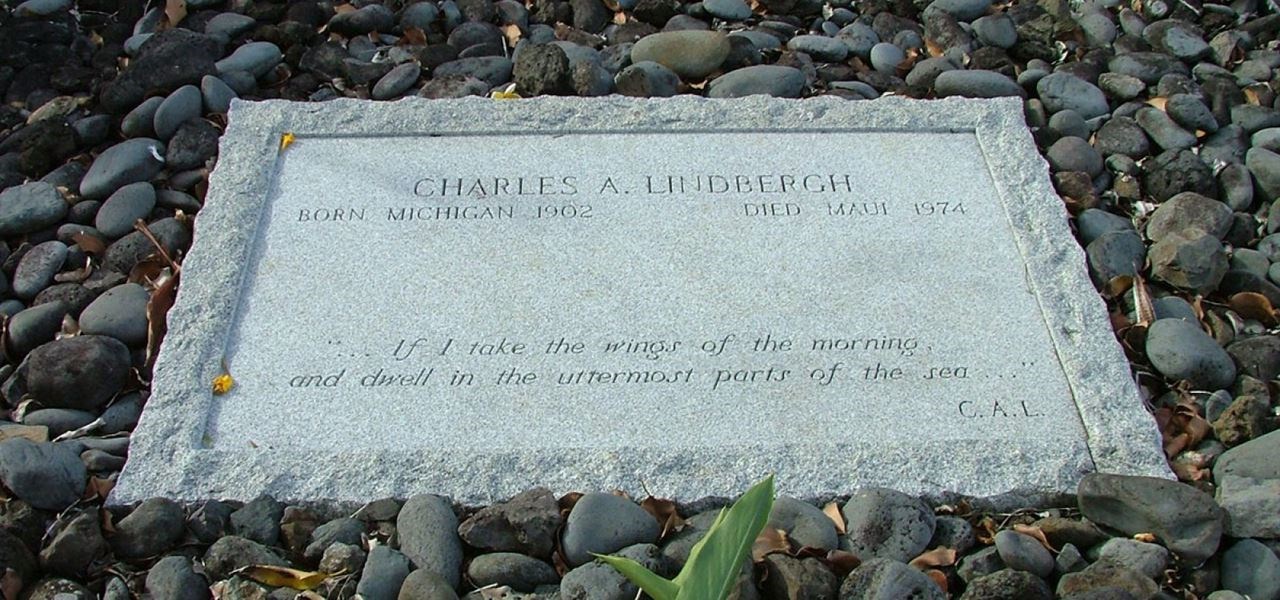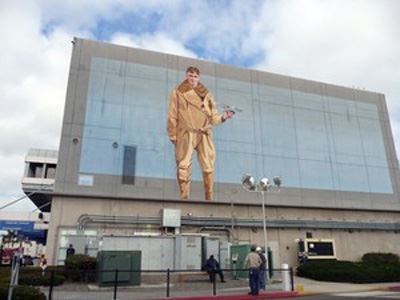 In the famous 1914 comic, Captain America is debuted punching Hitlerwashingtonpost.com "In the 1930s, the American Dream had become a nightmare, and I think comic books and superheroes in particular provided an escapist form of entertainment that allowed the American public to go into a fantasy world where all the ills of the world were righted by these larger-than-life heroes"(Hyde). For decades, superheroes have entertained us, and from the first time Captain America punched Hitler, or the first time Superman defeated a villain, Americans were entranced. Even today, superhero movies, comics, and toys rake in billions of dollars of profit, with thousands of fans worldwide. While these superheroes may only live in a world of fantasy, we come in contact with real world heroes on a daily basis. Although they may not be wearing supersuits or have superpowers, their actions are as worthy of our admiration as the superheroes we see on the big screen. Real world heroes are everywhere, and because of the same reason we look up to superheroes, we find that what we value is often reflected in our heroes. The girl who smiles at you every time she passes is compassionate. The next door neighbor that enlists in the army is brave. And the firefighter who saves others from burning houses is selfless. Although we do not pay millions of dollars each year to see movies being made about our everyday heroes, it is their influence that impacts us the most. To me, a hero only has to give back to the world; this does not necessarily mean the hero must make scientific breakthroughs, cure an economical crisis, or willingly donate large sums of money to a cause or charity. A hero only has the responsibility of improving the community they live in. Everyone is born with certain advantages and certain disadvantages, a hero has the ability to use their advantages to makeup for the disadvantages or handicaps of others. In short, a hero is someone who has a passion for something and has the bravery to use this passion to help others.
In the famous 1914 comic, Captain America is debuted punching Hitlerwashingtonpost.com "In the 1930s, the American Dream had become a nightmare, and I think comic books and superheroes in particular provided an escapist form of entertainment that allowed the American public to go into a fantasy world where all the ills of the world were righted by these larger-than-life heroes"(Hyde). For decades, superheroes have entertained us, and from the first time Captain America punched Hitler, or the first time Superman defeated a villain, Americans were entranced. Even today, superhero movies, comics, and toys rake in billions of dollars of profit, with thousands of fans worldwide. While these superheroes may only live in a world of fantasy, we come in contact with real world heroes on a daily basis. Although they may not be wearing supersuits or have superpowers, their actions are as worthy of our admiration as the superheroes we see on the big screen. Real world heroes are everywhere, and because of the same reason we look up to superheroes, we find that what we value is often reflected in our heroes. The girl who smiles at you every time she passes is compassionate. The next door neighbor that enlists in the army is brave. And the firefighter who saves others from burning houses is selfless. Although we do not pay millions of dollars each year to see movies being made about our everyday heroes, it is their influence that impacts us the most. To me, a hero only has to give back to the world; this does not necessarily mean the hero must make scientific breakthroughs, cure an economical crisis, or willingly donate large sums of money to a cause or charity. A hero only has the responsibility of improving the community they live in. Everyone is born with certain advantages and certain disadvantages, a hero has the ability to use their advantages to makeup for the disadvantages or handicaps of others. In short, a hero is someone who has a passion for something and has the bravery to use this passion to help others.
 Raymond Orteig presenting Lindbergh with the Ortieg prize (1927)en.wikipedia.orgHeroism is portrayed through Charles Lindbergh’s passion for aviation, and perusal of his goals, which have led to numerous advances in aviation. On February 4th, 1902, Charles Lindbergh was born in Detroit, Michigan. In 1920, he was admitted to the University of Wisconsin but dropped out after two years, and pursued a career in aviation by entering flying school in Lincoln, Nebraska. In 1919, Raymond Orteig offered a 25,000 cash prize for the first pilot who was able to fly nonstop from Long Island, New York to Paris, France or vice versa. For years aviators toiled over the task, resulting in numerous failed attempts and six deaths. In 1926, Lindbergh persuaded nine businessmen to support him financially in his quest to cross the Atlantic. He named his plane The Spirit of St. Louis, in hopes that it would help St. Louis prosper as an aviation center. On May 21, 1927, Lindbergh completed the historic transatlantic flight, flying a distance of 3,610 miles in only 33 hours, 29 minutes, and 30 seconds. After he completed his flight, Lindbergh toured Europe and the States. During World War II, Lindbergh worked as an unpaid consultant for the airforce. Tired of publicity and fame, he spent his later years in Maui where he died of lymphoma in 1974. To be brave, a hero must face the fear or danger, Lindbergh proved his bravery through his decision to attempt a challenge numerous pilots had failed. Lindbergh’s passion for aviation led to his discoveries and advances in the field, and the bravery he exhibited in completing his transatlantic flight, make him an inspirational hero.
Raymond Orteig presenting Lindbergh with the Ortieg prize (1927)en.wikipedia.orgHeroism is portrayed through Charles Lindbergh’s passion for aviation, and perusal of his goals, which have led to numerous advances in aviation. On February 4th, 1902, Charles Lindbergh was born in Detroit, Michigan. In 1920, he was admitted to the University of Wisconsin but dropped out after two years, and pursued a career in aviation by entering flying school in Lincoln, Nebraska. In 1919, Raymond Orteig offered a 25,000 cash prize for the first pilot who was able to fly nonstop from Long Island, New York to Paris, France or vice versa. For years aviators toiled over the task, resulting in numerous failed attempts and six deaths. In 1926, Lindbergh persuaded nine businessmen to support him financially in his quest to cross the Atlantic. He named his plane The Spirit of St. Louis, in hopes that it would help St. Louis prosper as an aviation center. On May 21, 1927, Lindbergh completed the historic transatlantic flight, flying a distance of 3,610 miles in only 33 hours, 29 minutes, and 30 seconds. After he completed his flight, Lindbergh toured Europe and the States. During World War II, Lindbergh worked as an unpaid consultant for the airforce. Tired of publicity and fame, he spent his later years in Maui where he died of lymphoma in 1974. To be brave, a hero must face the fear or danger, Lindbergh proved his bravery through his decision to attempt a challenge numerous pilots had failed. Lindbergh’s passion for aviation led to his discoveries and advances in the field, and the bravery he exhibited in completing his transatlantic flight, make him an inspirational hero.
Lindbergh’s passion for flying and love for the sky, pushed him to drive the boundaries of aviation, and reach the impossible. While Lindbergh was just beginning to solo his own flights, he met a man who made his own parachutes and was trying to sell them. Interested in this new advancement, Lindbergh tested the parachute out, jumping off a flying plane. Later, he reflected on his decision to jump:
“There was a deeper reason for wanting to jump, a desire I could not explain. It was the quality that lead me into aviation in the first place, when more safer and profitable occupations were at hand, and against the advice of most of my friends. It was a love of the air and sky and flying, the lure of adventure, the appreciation of beauty. It lay beyond the the descriptive words of men -where immortality is touched through danger, where life meets death on equal plane, where man is more than man, and existence both supreme and valueless at the same instant”(Lindbergh 255).
By flying, Lindbergh felt as if he reached “immortality,” and it allowed him to become something more than just himself. He believed he was able to obtain something seemingly unreachable to man. Lindbergh’s passion for flying lay in the beauty that he sees in it, the adventure that he experienced, and belief that he is doing the impossible. He flies not for fame or for fortune, not for wealth or for power, but for the adventure and love that he feels for aviation. He pushed the boundaries of aviation by breaking numerous records and demonstrating the capabilities of modern airplanes for commercial use. Lindbergh’s heroism is shown through not through his awards and his accomplishments, but more importantly, through his passion and resilience. After landing in Paris, Lindbergh’s plane was torn apart by spectators hoping to get a souvenir from the famous transatlantic flight. While visiting the airfield where his plane was being repaired, he borrowed a French plane:
“While he was at the airfield, Lindbergh borrowed a French Nieuport fighter plane and took it up for a spin. Although Lindbergh had never flown a Nieuport and could not be sure of its tolerances, he proceeded to execute a series of loops, rolls, corkscrews, barrel turns, and other aerial acrobatics. French officials watched in something like stupefaction as the most esteemed and treasured human being on earth swooped and rolled in the sky above them, pushing to its limits a plane he knew nothing about”(Bryson 148-149).
 An original color photo of a WW1 Nieuport 23 C.1 fighter planeen.wikipedia.orgThe Nieuport, a World War I fighter plane, was a plane designed for war and was not well suited for stunts. Nieuports also were not available in America, for only European factories produced them. Lindbergh, in his curiosity and his pursuit of knowledge, piloted a plane which he knew little of its tolerances and performed a series of tricks in it, leaving the spectators, other French Aviators, in “stupefaction” or shock and disbelief at his skill and bravery. Lindbergh, however, is not flying for approval of his spectators. Instead, he is flying for himself and because of his passion for flying. A hero must have a passion, it is this passion that allows them to set goals. Without a passion, a hero has no motivation or driving force; without it, the hero's actions are no longer performed for himself, rather for or because of others. It was because Lindbergh’s passion for flying that he tested the boundaries of aviation, and it is his discoveries that resulted from it make him a hero.
An original color photo of a WW1 Nieuport 23 C.1 fighter planeen.wikipedia.orgThe Nieuport, a World War I fighter plane, was a plane designed for war and was not well suited for stunts. Nieuports also were not available in America, for only European factories produced them. Lindbergh, in his curiosity and his pursuit of knowledge, piloted a plane which he knew little of its tolerances and performed a series of tricks in it, leaving the spectators, other French Aviators, in “stupefaction” or shock and disbelief at his skill and bravery. Lindbergh, however, is not flying for approval of his spectators. Instead, he is flying for himself and because of his passion for flying. A hero must have a passion, it is this passion that allows them to set goals. Without a passion, a hero has no motivation or driving force; without it, the hero's actions are no longer performed for himself, rather for or because of others. It was because Lindbergh’s passion for flying that he tested the boundaries of aviation, and it is his discoveries that resulted from it make him a hero.
Lindbergh’s bravery allowed him to face the dangers of flying, and pursue his dreams. When Lindbergh was eleven, his father taught him to drive, despite the obvious dangers. Later on in life, Lindbergh carried this mindset of facing danger into aviation:
“That car had seemed terribly dangerous at first. ...There were foils against danger -- judgment and skill. ... Twenty miles an hour had seemed an excessive speed when I started driving. A decade later, sixty was safe enough on a clear stretch of pavement. I learned that danger is relative, and that inexperience can be a magnifying glass” (Lindbergh 246-247).
 Lindbergh next to his plane The Spirit of St. Louisusatoday.comThe anecdote shows Lindbergh’s progressive understanding of danger, and how to deal with it. Lindbergh learns that danger is prevalent everywhere in life, that “danger is relative”, and in order to minimize danger, one must be experienced in working with danger. By applying this philosophy into flying, Lindbergh demonstrates his bravery through his acceptance of danger. His accepting danger, forces him to face it head on, despite whatever fear he may feel. Lindbergh prepares himself for the dangers of flying by taking precautions, using his “skill and judgement” to aid him in facing danger. Lindbergh’s bravery is also reflected through his design of his plane. In this dialogue, Donald Hall, the designer and chief engineer of the Spirit is asking Lindbergh what equipment he plans to bring onto the plane:
Lindbergh next to his plane The Spirit of St. Louisusatoday.comThe anecdote shows Lindbergh’s progressive understanding of danger, and how to deal with it. Lindbergh learns that danger is prevalent everywhere in life, that “danger is relative”, and in order to minimize danger, one must be experienced in working with danger. By applying this philosophy into flying, Lindbergh demonstrates his bravery through his acceptance of danger. His accepting danger, forces him to face it head on, despite whatever fear he may feel. Lindbergh prepares himself for the dangers of flying by taking precautions, using his “skill and judgement” to aid him in facing danger. Lindbergh’s bravery is also reflected through his design of his plane. In this dialogue, Donald Hall, the designer and chief engineer of the Spirit is asking Lindbergh what equipment he plans to bring onto the plane:
“‘What flying equipment do you want to put on the plane?’
‘None. those things are nice to have, but we can’t afford the weight’
‘how about a parachute?’
‘Same answer’ I reply. ‘That would cost us almost twenty pounds’”(Lindbergh 88).
When designing his plane, Lindbergh based the design off the Wright-Bellacana, a plane that had been specifically designed to break endurance records. Despite the reliability of this design, Lindbergh decided not to use this type of plane, instead adjusted the design of the plane into a single-engine plane. If this engine somehow malfunctioned during the flight, it would surely lead to Lindbergh’s death. This decision, coupled with Lindbergh’s decision not to bring a parachute, radio or other navigational devices, not only increased his danger of flying off track, but also increased the danger of being lost at sea. Lindbergh’s decision trade his safety for extra gasoline and for a lighter plane, exemplified his determination and bravery. A hero must be brave, they must be willing to face fear and danger to execute their goals. As Lindbergh wrote, danger is everywhere, and in order to chase our dreams, we must be brave. Lindbergh’s airplane design prepared him to face death, and despite this danger, he did not give up and continued to pursue his transatlantic goals. Lindbergh’s bravery in following his dangerous aviational dreams, is an example of the bravery a hero needs to pursue what they believe in.
 Lindbergh's tombstone in Maui (1974)www.hawaii-guide.comLindbergh’s bravery and willingness to pursue his passion in aviation is inspirational in that his story encourages others to pursue their own dreams and passions without fear or reservation. A hero must have a passion for something: be it a sport, a movement, or a cause. Lindbergh’s passion was flying; from the first time to the last time he flew, he was always flying for adventure and knowledge, and to obtain “immortality”. Lindbergh understood the dangers of his work, but willingly faced his fears to chase the dreams and goals he had set for himself. Lindbergh’s passion is inspirational because through doing the things he loved, he was able to set records, push boundaries and improve the field of aviation for generations to come. Engraved on his tombstone in Maui, is an epitaph from the Bible, it reads: “If I take the wings of morning, and dwell in the uttermost parts of sea.” Taken from Psalm 139:9, the quote refers to the “wings of morning “ as a metaphor for sunbeams, their swift and speedy motions, lending them to be called “wings”. If harnessed, these wing could carry a man to parts of the world never seen before, allowing him to “dwell in the uttermost parts of sea”. Lindbergh was able to take such a conjecture and turn it into a reality, both literally and metaphorically; his journey took him to places that no one else had flown before, and his achievements took him into areas of aviation untouched by other pilots.
Lindbergh's tombstone in Maui (1974)www.hawaii-guide.comLindbergh’s bravery and willingness to pursue his passion in aviation is inspirational in that his story encourages others to pursue their own dreams and passions without fear or reservation. A hero must have a passion for something: be it a sport, a movement, or a cause. Lindbergh’s passion was flying; from the first time to the last time he flew, he was always flying for adventure and knowledge, and to obtain “immortality”. Lindbergh understood the dangers of his work, but willingly faced his fears to chase the dreams and goals he had set for himself. Lindbergh’s passion is inspirational because through doing the things he loved, he was able to set records, push boundaries and improve the field of aviation for generations to come. Engraved on his tombstone in Maui, is an epitaph from the Bible, it reads: “If I take the wings of morning, and dwell in the uttermost parts of sea.” Taken from Psalm 139:9, the quote refers to the “wings of morning “ as a metaphor for sunbeams, their swift and speedy motions, lending them to be called “wings”. If harnessed, these wing could carry a man to parts of the world never seen before, allowing him to “dwell in the uttermost parts of sea”. Lindbergh was able to take such a conjecture and turn it into a reality, both literally and metaphorically; his journey took him to places that no one else had flown before, and his achievements took him into areas of aviation untouched by other pilots.
Personally, his bravery has inspired me to pursue my own dreams. Lindbergh’s story has given me the courage needed to continue gymnastics. Practice is four hours every day and is long and tiring; I often return home exhausted, wanting to do nothing but sleep, but I still have piles of homework to finish. Despite this, I still love gymnastics and the memories and experiences I have gained. It is Lindbergh’s story that has inspired me to continue, and has given me the courage and hope to juggle both school and gym, and pursue my passion. Lindbergh is a different kind of superhero, he does not fight to save the world, have superpowers, or wear super suits, but he does have a passion for flying. It is this passion, coupled with his bravery to act upon it that makes him a superhero. We may never see his story on the big screen, or see people paying millions for an action figure of him, but his story is still remembered today. When the San Diego Airport opened in 1928, it was named Lindbergh Field, in memory of Lindbergh's 1927 journey. However, Lindbergh’s true accomplishment lies not in his historical journey, but in how his story serves as an inspiration for others to follow their own dreams.
 The San Diego International Airport, formerly Lindbergh Field Airport stands in memory of Lindbergh's accomplishmentssdjewishworld - WordPress.com
The San Diego International Airport, formerly Lindbergh Field Airport stands in memory of Lindbergh's accomplishmentssdjewishworld - WordPress.com
Works Cited
Bryson, Bill. One summer: America, 1927. Anchor Books, a pision of Random House LLC,2014
Hyde, Douglas. “Superheroes rise in tough times.” CNN, 20 Mar. 2009.
Lindbergh, Charles A. The spirit of St. Louis. Charles Scribner's Sons, 1953.
The Holy Bible: Containing the Old and New Testaments ; Translated out of the Original
Tongues and with the Former Translations Diligently Compared and Revised. American Bible Society, 1986.
Page created on 2/16/2018 1:48:27 AM
Last edited 2/19/2018 5:50:56 PM
